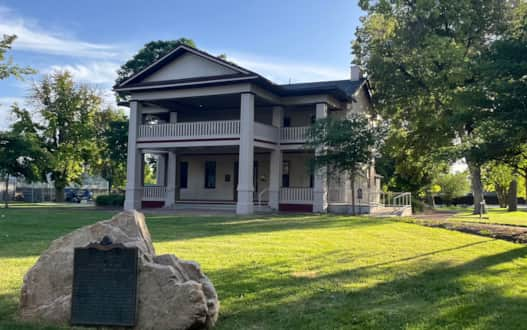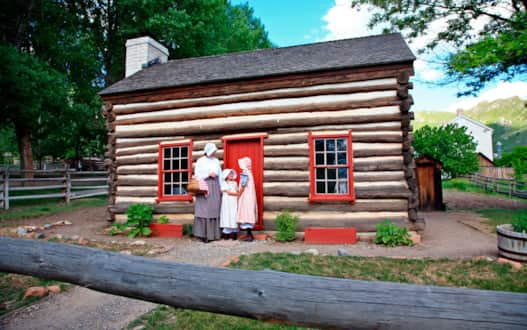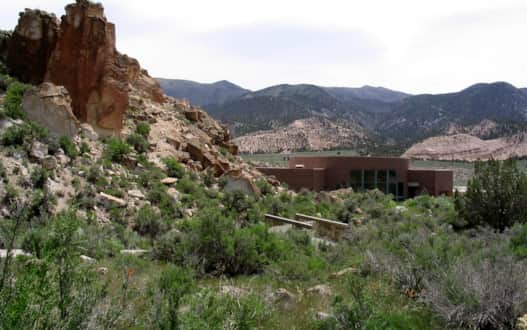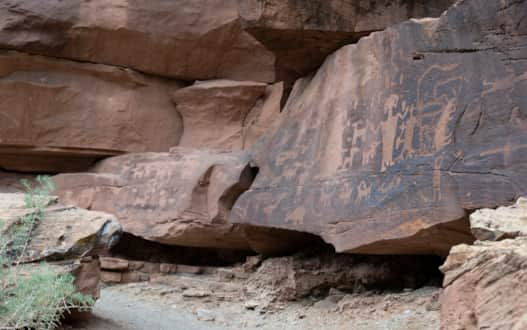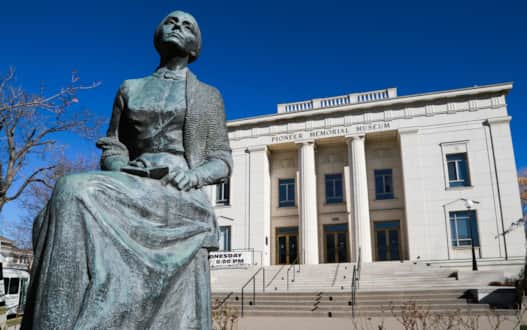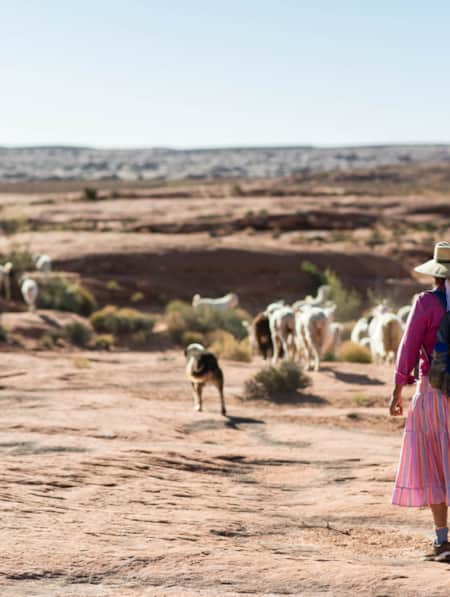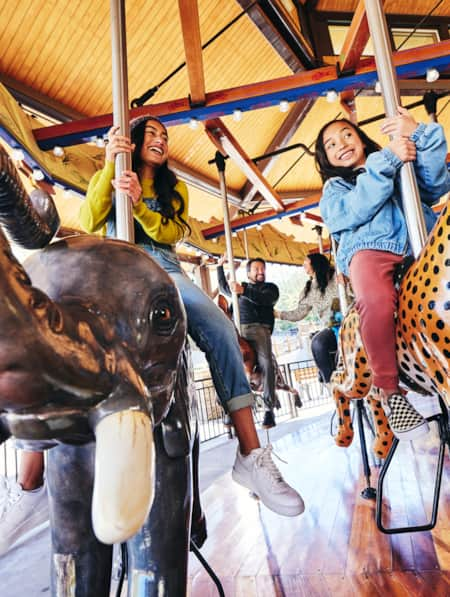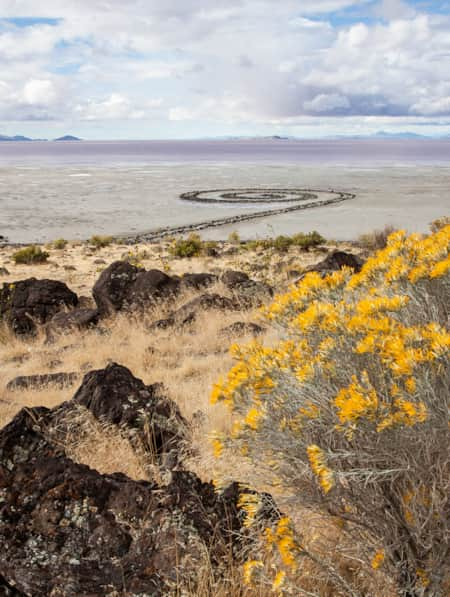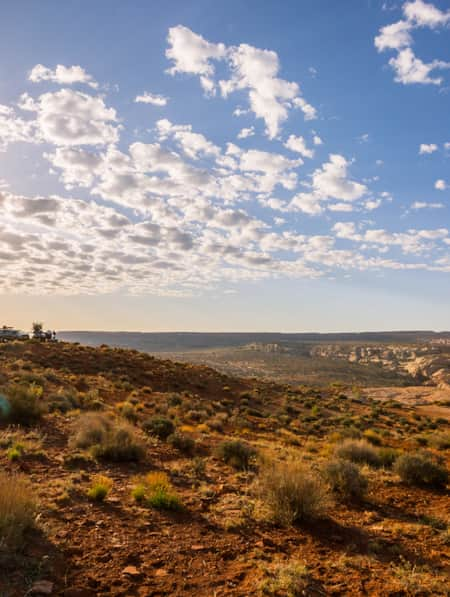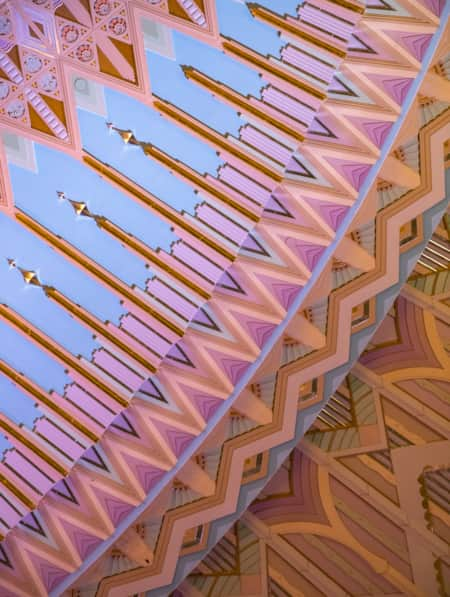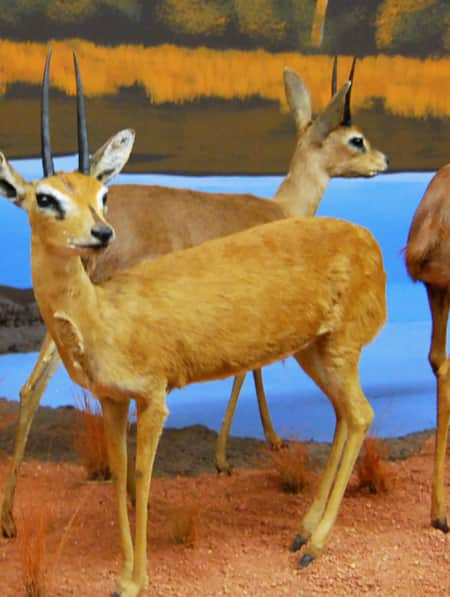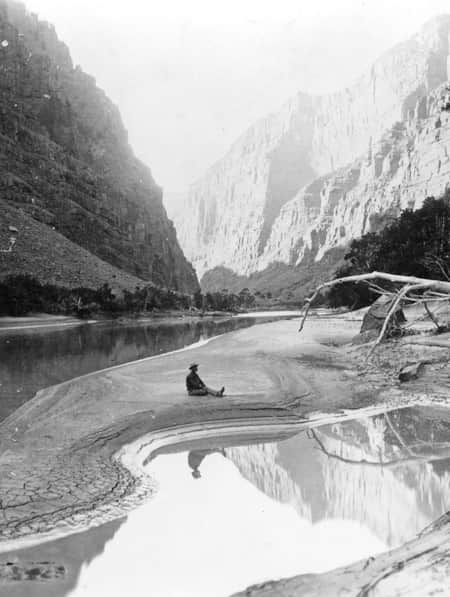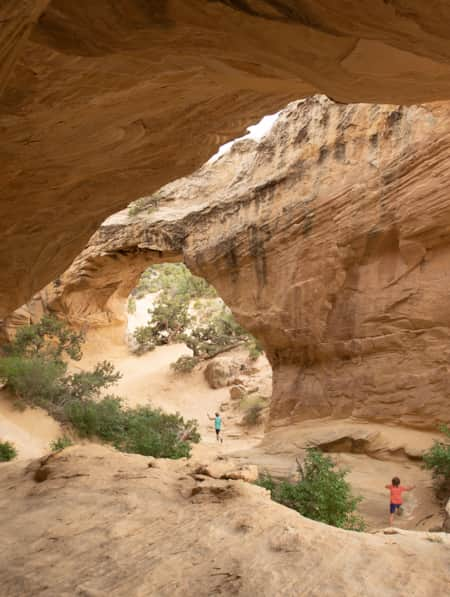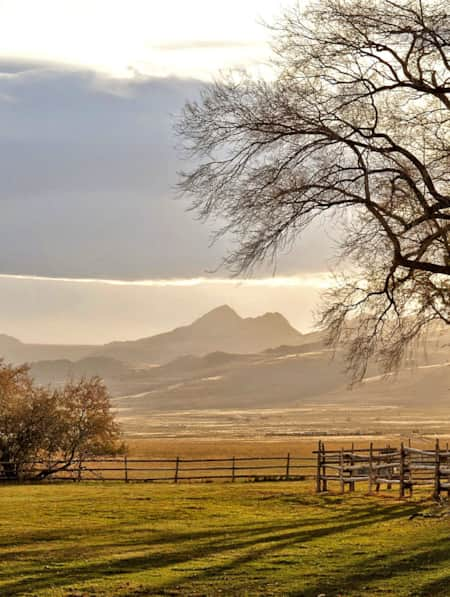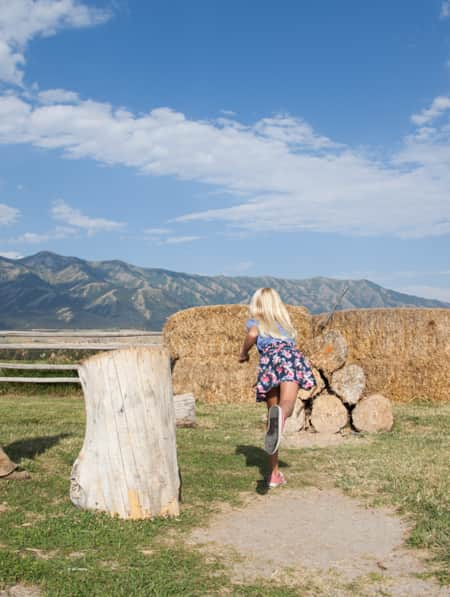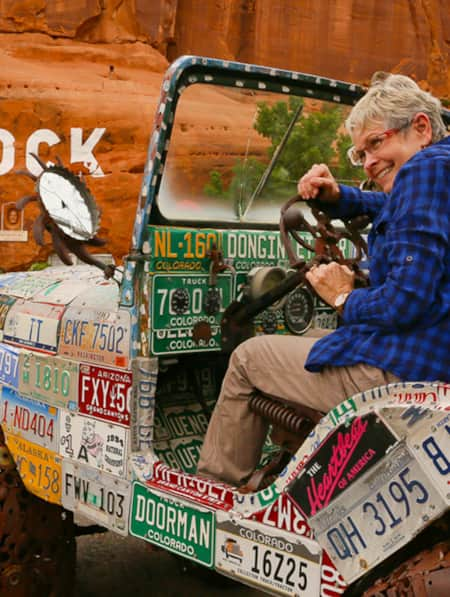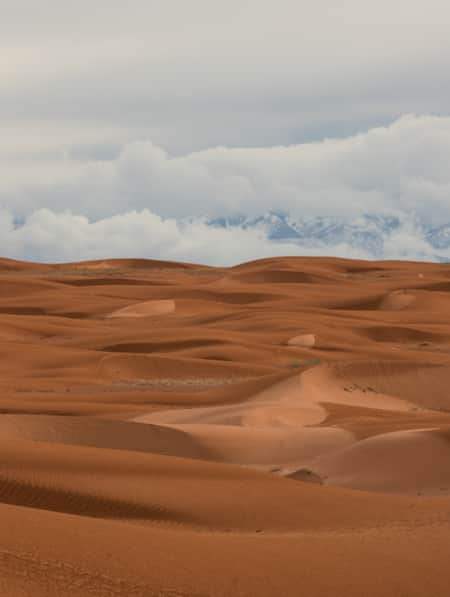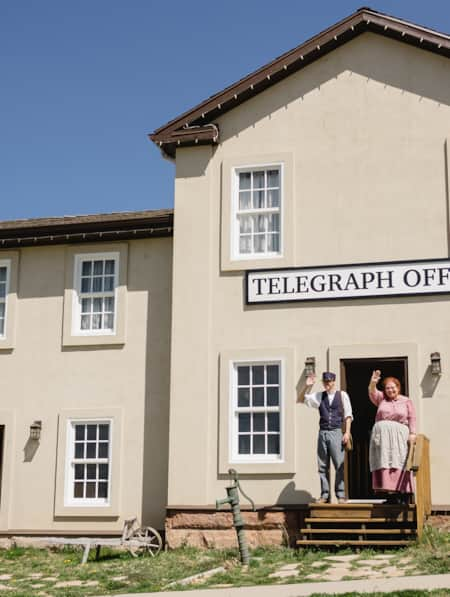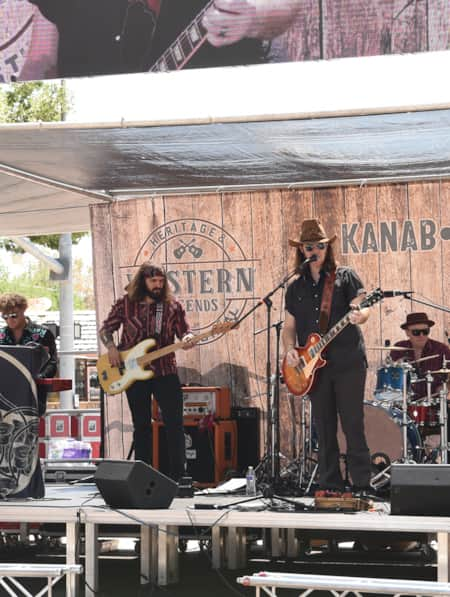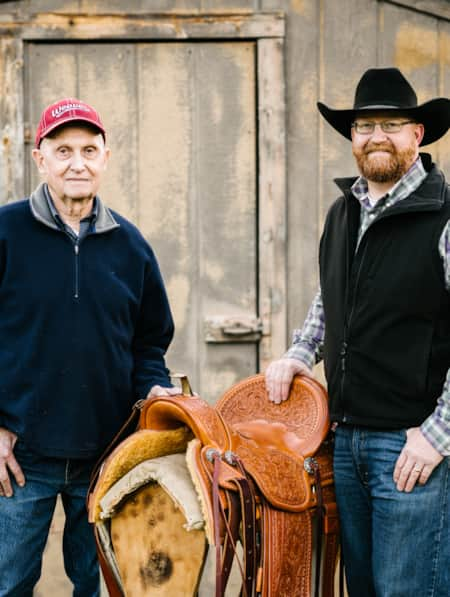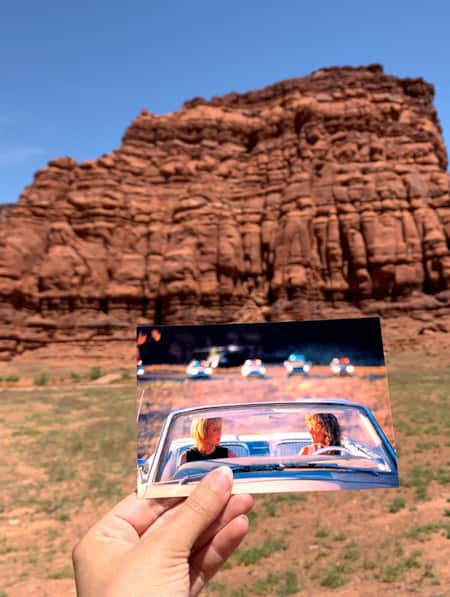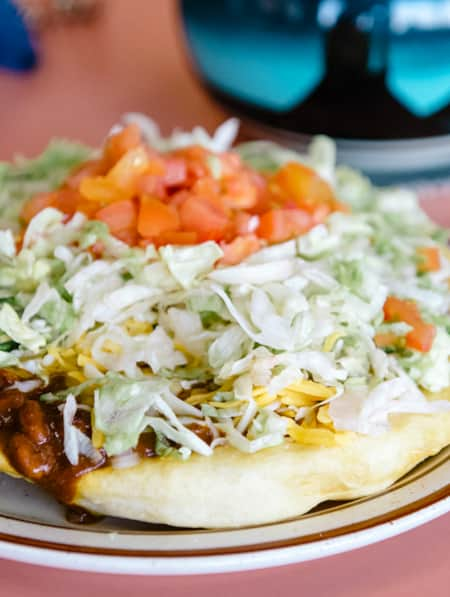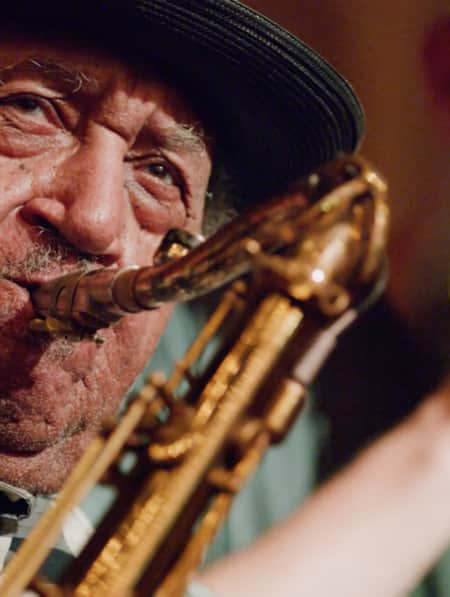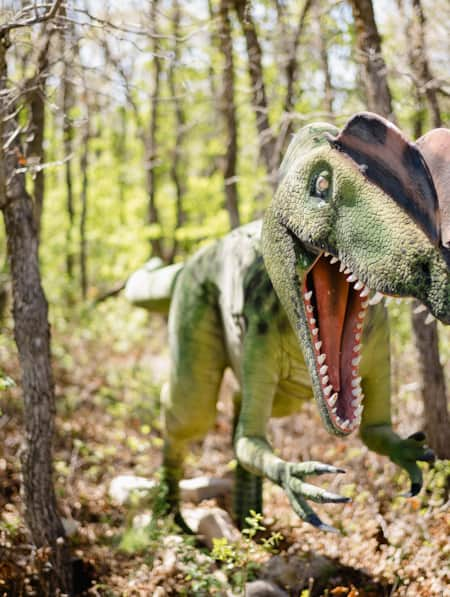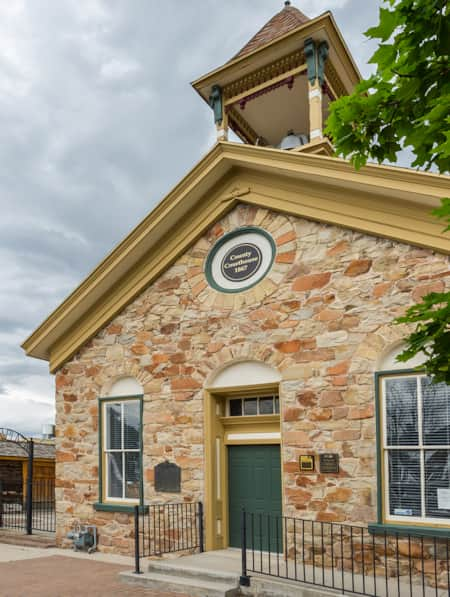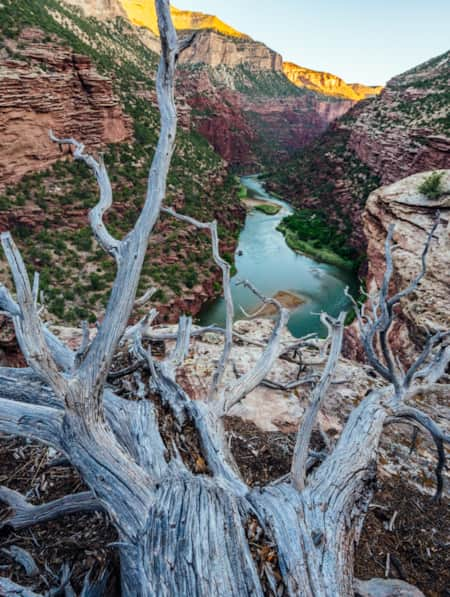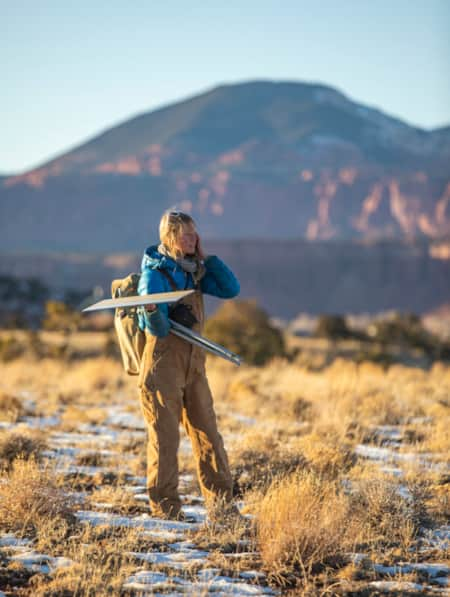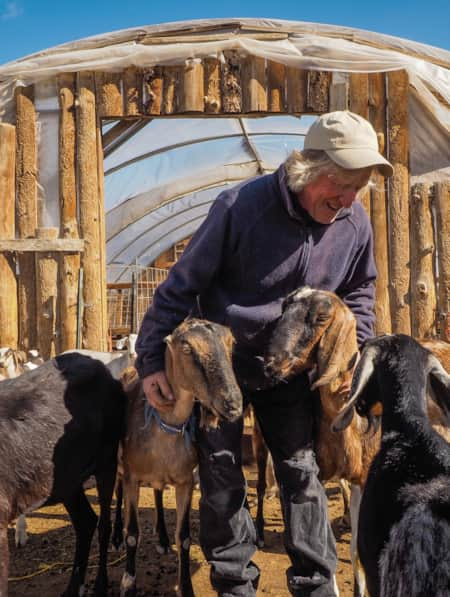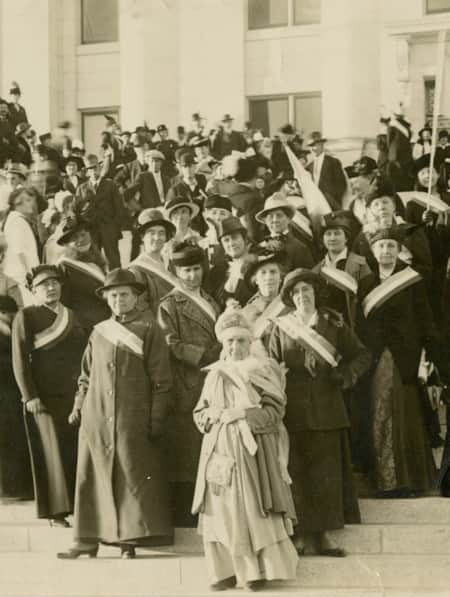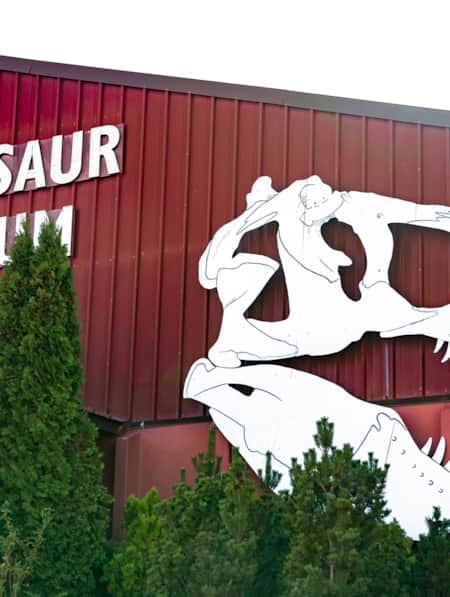Historical Sites in Utah: 14 Hidden Gems to Explore Pioneer and Indigenous History
Today, evidence of a blend of Indigenous cultures and pioneer heritage abounds throughout Utah’s astonishing landscapes. This combined heritage is the foundation for a modern legacy of arts and culture, including a thriving Olympic spirit, inspiring earth art and fascinating drives on historic roads.
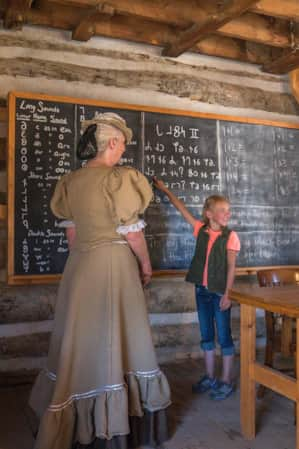
Every July 24, Utahns celebrate Pioneer Day with parades, fireworks and festivities that rival the 4th of July. The day honors 1847, when settlers from The Church of Jesus Christ of Latter-day Saints (popularly known as Mormons) colonized what is now the Salt Lake Valley. (Read: How to Celebrate Pioneer Day) While Utah has a proud pioneer heritage, the region’s human history dates back 13,000 years to the last Ice Age. Visitors to the state's central and southern regions can explore countless reminders of ancient peoples, including prolific rock imagery (also known as rock art) and their home sites and villages. Today, Utah is home to 60,000 Native Americans who are inextricably tied to this place and their heritage. Evidence of this blend of Indigenous cultures and pioneer heritage abounds throughout Utah’s astonishing landscapes. This combined heritage is the foundation for a modern legacy of arts and culture that also includes a thriving Olympic spirit, inspiring earth art and fascinating drives on historic roads.
Here are 14 hot spots of Utah heritage to enrich your vacation. Some are hidden gems on the scenic route to Utah's national parks while others are destinations unto themselves or unexpected surprises in a major metropolitan area.
Unique Things to Do In and Near Salt Lake City: Historical Sites
1. Chase Home Museum of Utah Folk Art
One of Utah’s too-often-overlooked museums, Chase Home Museum features examples of folk art traditions practiced by Utah’s multicultural communities including the Native American Gallery, Ethnic Folk Arts Gallery and the Occupational Folk Arts Gallery, which includes authentic hand-forged tools and cowboy gear, part of Utah's deep pioneer and Western heritage. The beautiful 150-year-old home is located at the heart of Liberty Park, next to the Tracy Aviary and is typically open Thursday–Saturday 10 a.m. to 4 p.m. Admission is free.
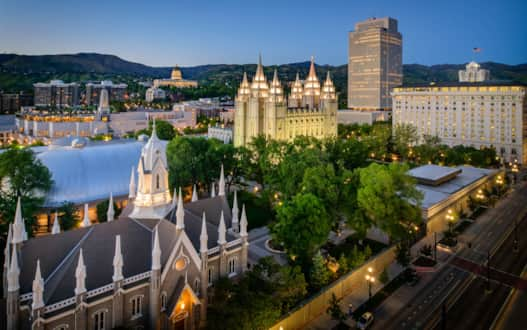
Temple Square contains historic buildings including The Salt Lake Temple, Salt Lake Tabernacle, Assembly Hall chapel and gardens, plus a visitor center, museums, libraries and pavilions.
2. Temple Square
While not exactly a hidden gem itself, Temple Square contains a treasure trove of heritage markers strewn throughout multiple blocks. So many, it's impossible to get to every one in a single visit. In 1853, pioneers laid the foundation for the Salt Lake Temple, marking the heart of Salt Lake City. Constructed from solid granite mined from Little Cottonwood Canyon, the Temple took 40 years to reach completion. Initially confined to a single square block, Temple Square now encompasses five blocks of downtown Salt Lake City — featuring historic sites, exhibits and architecture. The Salt Lake Temple is Utah’s most visited attraction across the state; visitors flock to Salt Lake worldwide to admire its colorful gardens and grand architecture. Visitors can explore the Church History Museum, explore their genealogy at the Family History Library, enjoy a complimentary tour, or catch a performance from the harmonious Tabernacle Choir — all within the Temple grounds.
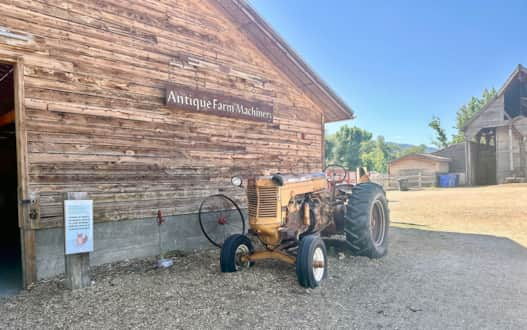
Experience old-time Utah farm living at Wheeler Historic Farm.
Photo: Melissa Stock
3. Wheeler Historic Farm
A slice of 19th Century life in Salt Lake City. Lots of family activities, from historic house tours and wagon rides, to farm animals. Come experience old-time Utah farm living. Wheeler Historic Farm is a public park and is open everyday during daylight hours to walk the farm and visit the animals. Check the Wheeler Historic Farm website for current events like May's Farm Fest, October's Pumpkin Days and Haybale Maze and the summer-long Farmers Market. Look for a series of signs featuring MILO and Friends, which encourages early math activities for young visitors.
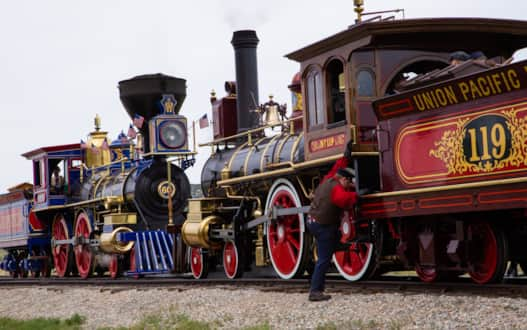
One of the greatest technological achievements of the 19th century is the completion of the first transcontinental railroad across the U.S.
4. Golden Spike National Historical Park
In the Spring of 1869, an enthusiastic crowd awaited in Northern Utah when the Central Pacific and Union Pacific Railroads ceremoniously connected. A golden railroad spike was driven into the final piece of track, marking the completion of the First Transcontinental Railroad. Located 1.5 hours north of Salt Lake, The Golden Spike National Historical Park now stands as a captivating historic destination that offers visitors a chance to experience the golden era of railroad expansion in the United States, thanks to the site exhibits, preserved locomotives and interpretive programs. Whether exploring the museum, walking along the original rail grade, or witnessing reenactments of the ceremonial driving of last spike, visitors to the Golden Spike National Historic Site will find plenty to explore. (Read: Cache Valley’s Rich Past and Thriving Present)
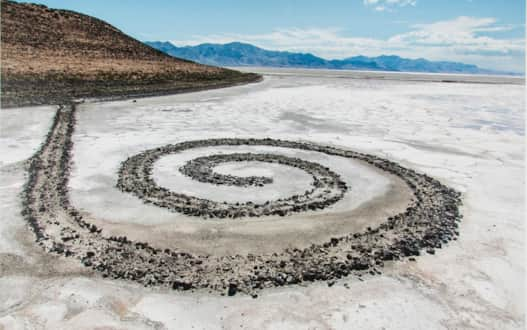
An aerial view of the Spiral Jetty, located just 45 minutes north of Salt Lake City.
Photo: Franco Gorgoni Estate
5. Spiral Jetty at the Great Salt Lake
Sculptor Robert Smithson’s piece is one of the world’s most unique works of art using the natural environment. Smithson formed the Spiral Jetty from six thousand tons of black basalt rocks and earth from the site (Read: The Spiral Jetty, Utah’s Most Iconic Land Art Sculpture, Keeps Drawing a Crowd). The spiral reaches 1,500 feet in length and is 15 feet wide. Located on the northeastern shore of the Great Salt Lake, Spiral Jetty is a 45-minute drive from the Golden Spike National Historic Site and the ATK Thiokol Rocket Garden — check local conditions as the last 15 miles of the drive are on a gravel road; also, pack extra water, supplies and towels. Visitors should be mindful that low water levels at the Great Salt Lake have increased the natural presence of tar around the Spiral Jetty shoreline. Watch your step and keep dogs on leash.
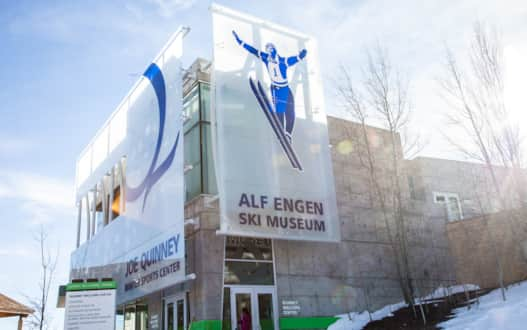
Learn about Utah's rich ski heritage at the Alf Engen Ski Museum.
Photo: Sandra Salvas
6. Alf Engen Ski Museum at Utah Olympic Park
This museum covers Utah’s rich ski heritage over 150 years, from the 1800s through the 2002 Winter Olympic Games. The Alf Engen Ski Museum is open daily 10:00 a.m. to 6:00 p.m. and admission is free. Also visit the Park City History Museum and Kimball Arts Center on historic Main Street (Read: Silver & Steam: 4 Ways to Explore Park City's Fascinating History).
7. This Is The Place Heritage Park
This Is The Place Heritage Park has a major place in Utah’s history — quite literally. After a grueling multi-month trek across the unsettled frontier of America, the first settlers set foot in the Salt Lake Valley. They stood on the hill where the park sits today and looked out over the stunning mountain valley, and Brigham Young declared (according to legend anyway), “This is the place.”
On the eastern edge of the park, the Native American Village spotlights the Native peoples who have called the Utah territory home for millennia. Aspects of Native American culture that you can experience include a large replica of a tipi (also sometimes spelled tepee), a male and female hooghan (also often spelled hogan), a shade house, a medicine wheel and a beading station where visitors can make their own basic bracelet or necklace using beads. (Read: Exploring the Native American Village at This Is The Place Heritage Park)
More Historical Sites Worth Visiting in Utah
8. Fremont Indian State Park and Museum (Sevier)
Take a trip back in time by visiting thousands of rock art panels. The construction of Interstate 70 uncovered the largest known Fremont Indian village (Read: Meet the Fremonts: Unearthing an Ancient Civilization). The large visitor center and museum showcases many fascinating artifacts preserved from the site. Nearby access to hiking, Castle Rock Campground and the Kimberly Ghost Town make Fremont Indian State Park a great stop in Central Utah or an intriguing companion piece to the Fremont Culture petroglyphs found in Capitol Reef National Park. The day-use fee is $3 per person/$6 per vehicle. The campground is $15 a night.
9. Nine Mile Canyon (Price Area)
Discover the “World’s Longest Art Gallery.” Several thousand years ago, ancient people carved and drew the world around them on the rock faces, many of which are accessible by road in this 46-mile-long gem, including the world famous “Great Hunt Panel” and other petroglyphs recognized on the National Register of Historic Places (Read: A Rural Community Leading the Way in Stewardship and Preservation). Many visitors combine Nine Mile Canyon with trips to Price and the San Rafael Swell. Plan a full day to drive the canyon with options to get out and hike or bike around, and don't forget to pack plenty of water and fill up vehicles with gas before you go.
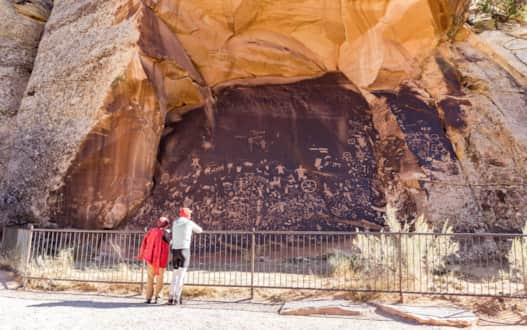
Discover hundreds of petroglyphs at Newspaper Rock along the upper end of Indian Creek Canyon.
Photo: Emily Sierra
10. Newspaper Rock (Canyonlands Area)
Newspaper Rock is located 15 miles west of U.S. 191 along the Indian Creek Corridor Scenic Byway in the Indian Creek unit of Bears Ears National Monument. The rock is called Tse' Hane in Navajo, or “rock that tells a story.” Hundreds of petroglyphs here feature a mixture of forms, including pictures resembling humans, animals, tools, and more esoteric, abstract things. The 200-square-foot rock is a part of the cliffs along the upper end of Indian Creek Canyon (Read: Touring the Indian Creek Corridor Scenic Byway). Keeping these places and landscapes safe is everybody's job. Please avoid adding any marketing to rock imagery sites and report any vandalism.
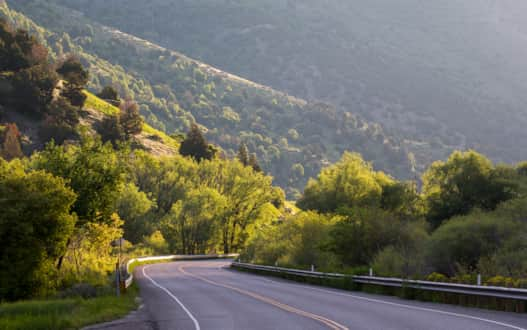
Take Highway 89 to view sights all the way from Zion and Bryce Canyon to Logan Canyon and Bear Lake.
Photo: Jay Dash
11. Utah's Heritage Highway: Highway 89 (Statewide)
Before Interstate 15, U.S. Highway 89 was a primary Utah thoroughfare. From Kanab, travel near Zion and Bryce Canyon through pioneer-era towns. Explore Miners’ Park at Marysvale, the “Little Denmark” section of the Mormon Pioneer Heritage Area, Utah’s Fruit Highway, the American West Heritage Center, and Logan Canyon north to Bear Lake (Read: Why You Should Ditch I-15 on Your Way to Zion).
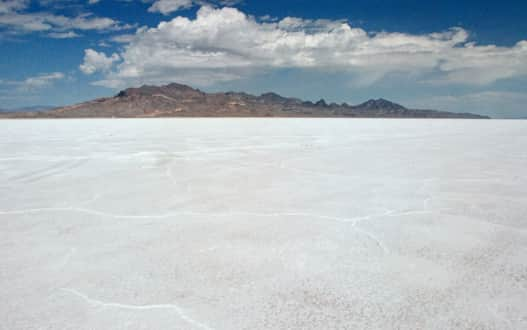
The Wendover Air Base borders the Bonneville Salt Flats and Sun Tunnels in Utah's West Desert.
Photo: Matt Morgan
12. Wendover Air Force Base (Wendover)
Take a step back to WWII for a fascinating look at the secret Manhattan Project and how this base, featuring more than 80 original buildings, was used as a bomber-training site for the bomber pilots, including those bound for Hiroshima and Nagasaki. The Wendover Air Base is open from 8:00 a.m. to 6:30 pm daily, but to visit the museum, arrive at least an hour before closing. The air base is close to the Bonneville Salt Flats and Sun Tunnels in Utah's West Desert. For the well-prepared traveler, consider a larger West Desert ramble through ghost towns and along the Pony Express trail.
13. The Pioneer Memorial Museum (Salt Lake City)
The Pioneer Memorial Museum features the world’s largest collection of Utah pioneer artifacts, including the wagon in which Brigham Young rode in on the trek to Salt Lake City in 1847, and offers a great slice of historic Western living. The museum is open Monday-Friday from 9 a.m. to 4:30 p.m. There is also a history and photograph department for extended research. The museum is located next to the State Capitol and close to Memory Grove Park.
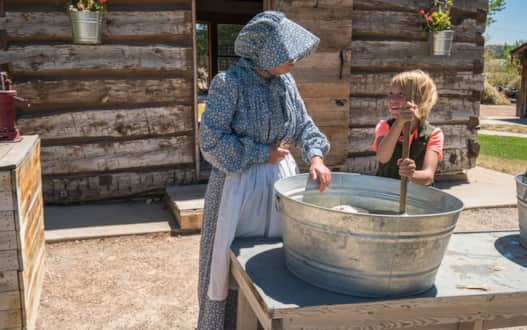
Discover the pioneer history of Utah's southwest at the Frontier Homestead State Park Museum.
Photo: Utah State Parks
14. Frontier Homestead State Park (Cedar City)
This living museum displays mining equipment, horse-drawn wagons, historic buildings, and a Paiute native camp from the area’s pioneer history. The Frontier Homestead State Park Museum is located in Cedar City and can easily be combined with visits to the Tony Award-winning Utah Shakespeare Festival, Brian Head Resort and Cedar Breaks National Monument. Frontier Homestead is $3/person and is open September–May 9 a.m. to 5 p.m. Mon-Sat and June–August 9 a.m. to 6 p.m. Monday–Sunday.
